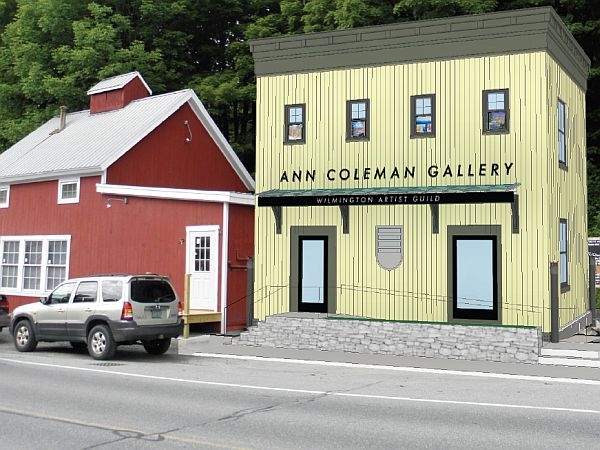
Almost every business in Wilmington was damaged in Tropical Storm Irene.
But no loss was greater than Ann Coleman’s. Her entire art gallery was lifted up by the floodwaters and swept away.
Now Coleman hopes to replace her loss with a building that will float — but stay put — in the next flood.
After the flood, Ann Coleman ran into Joseph Cincotta, a local architect. She told him she thought Wilmington should be rebuilt on piers, or stilts, to be ready for the next time the Deerfield River floods.
"I was actually kind of joking," she laughs.
But Cincotta took the idea seriously. Months later, Coleman called on him to help rebuild the gallery. And Cincotta came up with a plan for a floating foundation, anchored by piers that would hold the building in place.
"I thought, ‘What if the buildings could actually float? What if they could rise up with the water, and then just settle down?’" Cincotta said.
Coleman’s old gallery was clearly in a flood plain. It was built as a liquor store fifty years earlier –shoehorned in between the Chamber of Commerce and another business. FEMA flood maps weren’t taken quite so seriously then as they are now.
In fact, Cincotta says, it was the FEMA specification for building in a flood zone that started him thinking seriously about a floating alternative.
"The FEMA regulation is that you must show me that the building will stay where it is and not go floating down the river like the last one did. The reason I thought about the floating was when I saw how much concrete was going to be use to anchor the building down," Cincotta said.
Cincotta predicted it would cost about $30,000 to extend a concrete block down into the soil as an anchor. It would mean the gallery would have a concrete floor, which would be much less energy efficient.
Cincotta says concrete is not a good insulating material.
"So cold concrete buildings are not fun. I knew that Ann would be walking on that cold concrete floor that the building was tied to, and that’s not fun," Cincotta said.
But Cincotta says a floating building could actually be wrapped in insulation.
Cincotta ran the idea by a civil engineer he’d worked with before. They were sharing a ride back from a conference when Cincotta asked him: What about a floating building? One that can rise up vertically in a flood but can’t float away because it’s tethered to posts buried in concrete.
"And he goes, ‘oooh.’ And he’s driving, and he starts slowing down. ‘Floating huh?’ And he started addressing all these concerns: ‘What about the lateral loading? What about the torsion?’ And I said, ‘Yeah, but think about it. Those same things are done in docks.’"
Cincotta says he’s gotten more positive feedback since then.
And it turns out other building designers have been thinking about floating foundations, as a more resilient way to build for future floods.
One design has been built along the Gulf Coast, in the area affected by Hurricane Katrina. Various types of floating buildings are in use in the Netherlands.
The Coleman Gallery project is now under review by Wilmington’s Design Review Committee. Ann Coleman hopes to start rebuilding her gallery next spring.